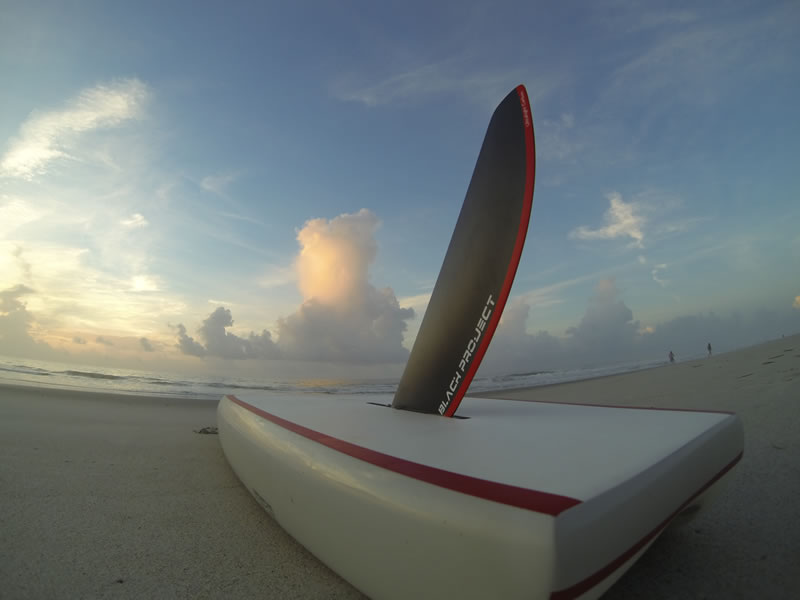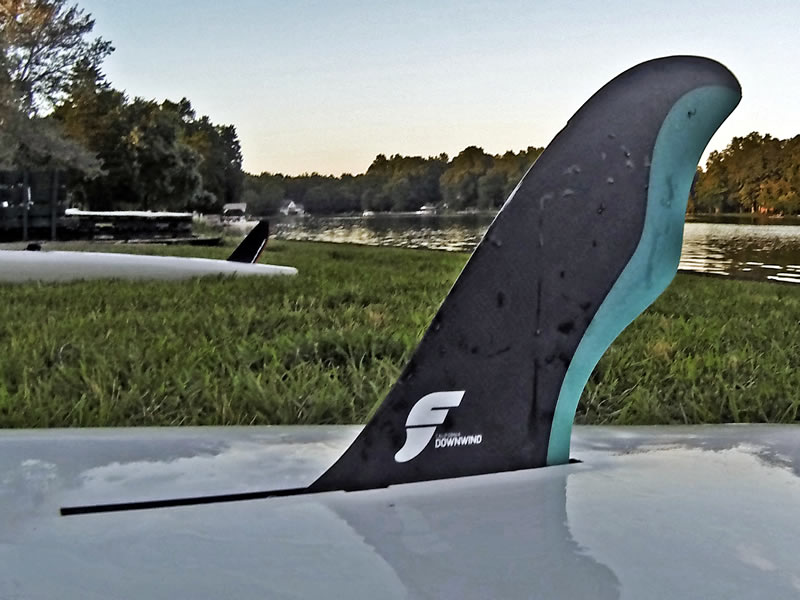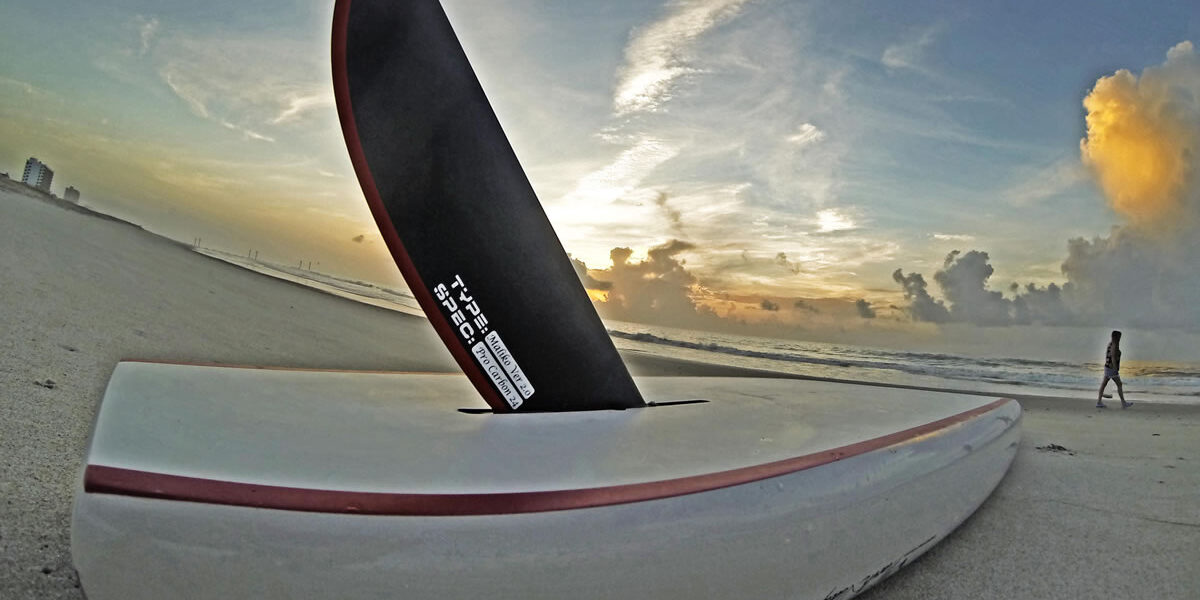I’ll start with the usual disclaimer – these tests are more fun than scientific, and your mileage will vary.
This particular test session was cut short because one of our testers unexpectedly landed a date and ditched us halfway through, so the data is incomplete – but we still gathered some interesting information.
Meet the Players

MALIKO v2 Pro Carbon SUP Race Fin Retail $180

TIGER v2 Pro Carbon SUP Race Fin Retail $170

Futures California Downwind Retail $105

FCS Dolphin 10.0 Retail: $18
I know, you’re thinking, why test a Downwind fin against something like the Tiger? Seems totally unfair, right? But if there’s one thing our totally unscientific testing has taught us, it’s that you really can’t take things for granted when it comes to SUP gear.
Remember, stability equals speed, so it just could be that the downwind fin turns out to be the fastest fin of all. Besides, Black Project highly recommends the Maliko “for downwind and ocean races as well as long distance paddling on flatter water…” so we are comparing apples to apples here.
In the Hand
All three of the carbon race fins are quality fins, and you can feel that when you pick them up. All three are good and stiff, and the Maliko and Tiger fins feel almost too light to be true. They do actually float, by the way.
As for the Dolphin, well, it costs $18. ‘Nuff said.
The Protocol
Testing took place on a flat-water course in calm conditions with some boat traffic. Each of the three test paddlers paddled their own board for all trials, switching out fins after two runs. The boards used in these tests were a 2016 14′ x 23″ Starboard All Star, a 2015 14′ x 24″ SIC Pro LITE, and a 2015 14′ x 25″ Riviera RP-Raceboard.
Trials were performed over a ¼ mile course. Paddlers went all out on each run, attempting to complete each run as quickly as possible. Paddlers all started together and kept their own times.
The Results
As I mentioned earlier, this is an abbreviated test, and none of our paddlers tested all four fins, so I’ll present the data for each paddler and the fins he tested. Because instructions were to paddle as quickly as possible, we’re showing the fastest run for each paddler on each fin, rather averaging test runs together.
Paddler 1 on the SIC (mph)
Futures Downwind – 2:38 | Maliko – 2:35 | Tiger: 2:38
Paddler 2 on the Starboard (mph)
Futures: 2:34 | Maliko: 2:32
Paddler 3 on the Riviera (mph)
Futures: 2:48 | Tiger: 2:52 | Dolphin: 2:51
The Fin of the Day

The Maliko turned in the fastest times of the day, averaging 2-3 seconds faster than the Downwind. Paddler 3, who didn’t get a chance to sample the Maliko, turned in his best time on the Downwind.
One thing that was fairly consistent is that all three paddlers were slower using the very sleek Tiger, as opposed to the larger “downwind” fins, even though conditions were pretty calm. Why?
Theory 1: Stability = Speed
The Downwind and the Maliko, which both reach deep into the water column, should be slower than the lower profile Tiger, right? But on these fairly narrow boards, the extra stability offered by the larger fins allowed us to track straighter and apply more power to the paddle.
Theory #2: Straight lines are faster than squiggly lines.
Straighter tracking means fewer side changes, and changing sides does slow you down – the more strokes you can take before making a course correction, the faster your average speed will be.
Let me add that the Tiger actually does exactly what it’s designed to do – it’s a technical fin, designed to allow SUP racers to whip around buoys and accelerate off to the next turn. For a skilled paddler on a technical course, the Tiger is a lightweight and highly maneuverable option.
In a Race
Just for kicks, let’s extrapolate these results out to a 10km race distance, assuming each paddler raced with the exact same effort in the exact same conditions with each fin:
Paddler 1

The Tiger would have finished 1:07 after the Maliko, and the Downwind would finish 1:35 after the Maliko.
Paddler 2

The Maliko gets the win, and the Downwind would arrive 32 seconds later.
Paddler 3

The Downwind wins here, with the Dolphin and Tiger finishing up 1:09 and 1:44 behind, respectively.
Small differences do add up over longer distances, which is why it’s important to test your equipment against your own abilities and gear. By the way, if we extrapolate out to Chattajack distances, Paddler 1 would have finished eight minutes faster using the Maliko. Believe me, eight minutes at Chattajack 2016 was an eternity…
Final Words
Take these results for what they’re worth. For us, this kind of gear testing is always fun and often reveals viewpoints and results we hadn’t considered. Try it yourself — you’ll get a great workout, and you’ll know your gear better, which is a good thing.
I’ll leave you with the comments made by our three paddlers during testing:







